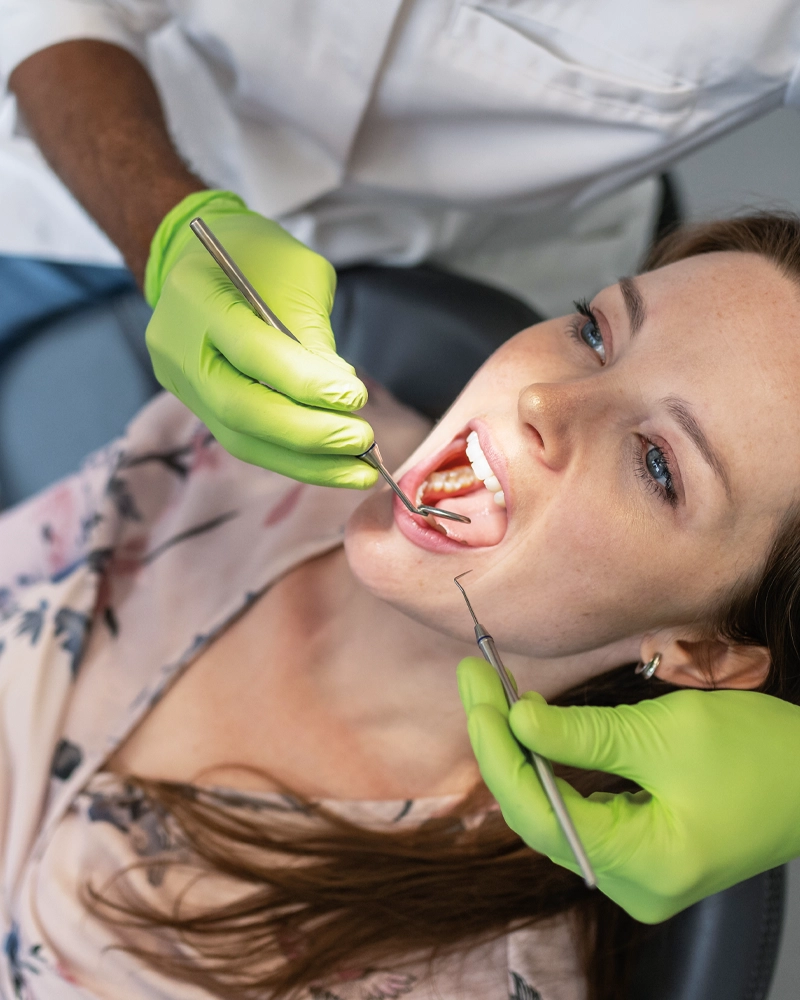Beyond routine cleanings:
the different types of dental cleanings
Besides brushing and flossing, the most common advice for maintaining your oral health is going to the dentist for a routine cleaning twice a year. Routine cleanings aren’t all there is, though. Depending on your oral health needs, your dentist might suggest other types of cleanings. Here’s what you can expect from each type of cleaning.
Routine cleaning
During a routine cleaning, your dentist or dental hygienist will clean your teeth using tools like plaque scrapers. They may also use a water spray and vacuum so you don’t swallow the plaque. This cleaning (also called “prophylaxis”) includes removing plaque and bacteria from the entire surface area of your teeth. They also evaluate your overall oral health to look for potential issues or monitor existing ones.
Routine cleanings are the most common type of cleaning. If you go to the dentist regularly, you’re likely getting a routine cleaning and checkup.
Full mouth debridement
Similar to a routine cleaning, this procedure is for patients who’ve had plaque and tartar build up over years. To accurately assess your oral health, your dentist needs to be able to see your mouth. Long-term plaque and tartar build up can make it difficult for your dentist to see, so a deep, full mouth cleaning is necessary before any other checks can happen.
In some cases, dentists with use a tool that applies ultrasonic vibration to break up tartar and plaque and make them easier to remove. Because there’s more work to do, full mouth debridements take longer than routine cleanings.
There’s no shame in needing a deep cleaning. Everyone’s circumstances are different. Getting a deep cleaning is an important step to taking long-term care of your oral health.
Scaling and root planing
Your gums can need a cleaning too. Your gum line can develop spaces or openings called periodontal pockets. They’re difficult to clean at home and they can collect bacteria, which can lead to gum disease and bone loss around your teeth. If you develop periodontal pockets, your dentist may recommend a pair of cleaning treatments called scaling and root planing.
-

Scaling cleans the surfaces of your teeth and below your gumline. This is typically done using dental instruments that chip away tartar and a water spray to wash away plaque.
-

Root planing smooths the root surfaces of your teeth. Because plaque and bacteria are harder to remove from rough areas of your gums and root surfaces, this smoothing helps prevent further build up and reduces inflammation.
Depending on the severity of gum disease, scaling and root planing may take more than one appointment and may require the use of anesthetics.
Maintaining your oral health
There’s no way to avoid a routine dental cleaning — everyone needs them, no matter how perfect their routine is. But you can reduce the likelihood that you’ll need more intensive cleanings by keeping up a consistent daily oral health routine and making regular appointments with your dentist.
No matter what oral health issues you face, your dentist can help you maintain a strong, clean smile. Dental benefits help make oral health maintenance more affordable. Talk to your employer about health plans they offer or visit deltadentalins.com/individuals to buy coverage for you and your family.
What you need to know about baby teeth
If you’re a caretaker of a young child, understanding their oral health needs is essential. This is everything you should know about baby teeth.
Save your spring from seasonal allergies
Do your allergies irritate you? These tips for preventing seasonal allergies may help.
Mouth-friendly recipe: deviled eggs
These aren’t your grandma’s deviled eggs. Made with Greek yogurt and apple cider vinegar, these snacks are an upgrade on the classic.








